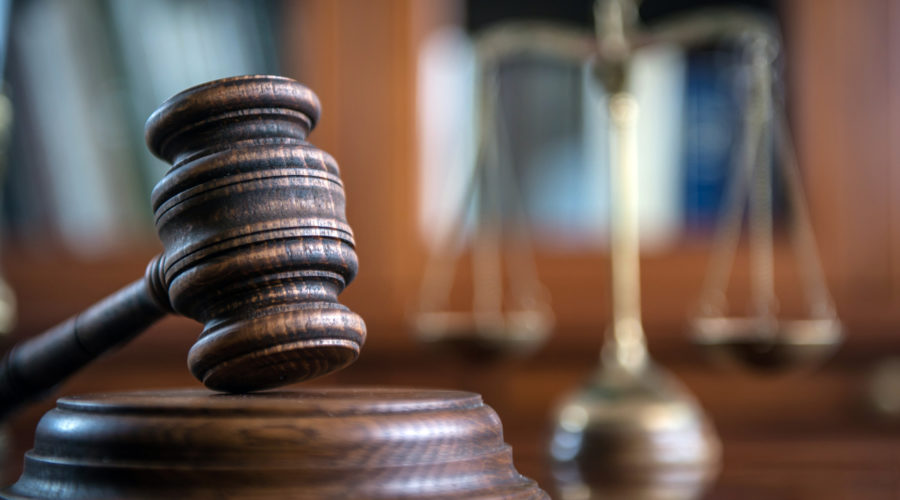The case of the Phantom Passenger
The respondent alleged he was a passenger in a vehicle involved in a motor vehicle accident on 20 November 2012. The appellant was the driver of that vehicle.
There was no dispute that the appellant had breached her duty of care to the occupants of her vehicle but the appellant did dispute that the respondent was a passenger in that vehicle. The appellant filed a defence in the District Court denying that the respondent was a passenger in the vehicle and alleging the respondent had made false or misleading statements pursuant to sections 117 of the Motor Accidents Compensation Act 1999 (NSW) (Act).
The matter proceeded to hearing before District Court Judge Norton SC in the District Court. The respondent gave evidence and relied upon the evidence of two other occupants of the vehicle (who also made claims arising from the accident) who supported that he was a passenger in the vehicle. The appellant cross examined all three witnesses at length and also called two independent witnesses who gave evidence that they did not see the respondent in the vehicle.
The trial judge ultimately found for the respondent. She noted the issues of credit that had arisen during the hearing in respect of the respondent and the two other occupants of the vehicle (including one who had been granted a certificate under section 128 of the Evidence Act 1995 (NSW)). Her Honour placed significant weight on various concessions made by those witnesses as to the improvement of their symptoms, such that their answers could not be held to be tailored to assist their own cases or that they exaggerated the effects of any injuries said to be suffered. It was also found that the majority of the medical evidence provided some support for the respondent having suffered injuries consistent with the collision.
The trial judge found that the witnesses called by the respondent were witnesses of integrity and credit but held that there were a number of reasons why those witnesses may have been mistaken as to their evidence.
Her Honour found that the evidence of the two other occupants of the vehicle by itself established that the respondent was in the vehicle at the time of the collision. Her Honour then found that given the serious nature of the allegation raised in the defence, the appellant had a ‘tactical burden’ to show that the respondent was not in the vehicle. She referred to section 140 of the Evidence Act 1995 regarding the requisite standard of proof.
The trial judge found for the respondent and awarded $15,486.05 in damages plus the medical expenses previously paid by the insurer plus costs.
The appellant filed a notice of appeal. The appellant’s main complaint was the way in which the trial judge had dealt with the evidence and the very significant inconsistencies in the evidence given by the respondent and the two other occupants of the vehicle. An application for leave was necessary given the damages awarded to the respondent was less than $100,000.00.
The Court of Appeal heard the application for leave and the substantive appeal on 13 July 2018. It was heard by President Beazley, Justice Bellew and Acting Justice Emmett. Judgment was handed down on 28 September 2018.
The Court of Appeal granted leave, despite the small award of damages made. It was accepted that the Courts should not allow themselves to:
‘be used for the bringing of fraudulent claims. This is even so if the claim is small, such as is the case here, if in fact the respondent was not a passenger in the motor vehicle accident when the accident occurred’ (at [12]).
The Honourable Justice Beazley wrote the leading judgment (with Justice Bellew agreeing with those orders and Acting Justice Emmett agreeing with the orders but having slightly different reasoning).
The Court of Appeal found that the trial judge had approached the task of fact finding in a ‘segmented’ manner and found that her Honour had fallen into error in approaching the evidence in that way. The correct approach that should have been taken by the trial judge was:
‘…after hearing the witnesses, making assessments as to the credit and reliability of their evidence and examining the documentary evidence, if any, must weigh the whole of the evidence to determine whether the party bearing the legal onus has proved his or her case.’ (at [54])
The Court of Appeal confirmed that a party to the proceedings who denied a claim did not have a burden to adduce evidence that contradicted the opposing parties’ position. The appellant did not bear a legal onus or an evidentiary burden and was not required to adduce evidence to prove that the respondent was not in the vehicle. Section 140 of the Evidence Act 1995 did not require the appellant to provide proof that the respondent was not in the vehicle, and consideration of the defence was part of the determination as to whether her Honour was satisfied that the respondent had proved his claim. Her Honour had effectively reversed the onus in respect of her comments on the ‘tactical burden’ resting with the appellant.
It was further held that the trial judge had relied upon a number of considerations, some of which were speculative and some of which were not the subject of any evidence in dismissing the evidence of the two independent witnesses.
The orders made by the trial judge were set aside and judgment was entered for the appellant with an order that the respondent pay the appellants costs of both the hearing at first instance and the appeal.
Acting Justice Emmett gave further consideration to section 140 of the Evidence Act and noted it was open to the Court to take into account the nature of the cause of action, the nature of the subject matter of the proceedings and the gravity of the matters alleged, however it remained for the respondent to prove his case.
Comments
The decision is a useful one. The Court of Appeal is clearly concerned to ensure that the Courts are not seen to be awarding damages in fraudulent claims and has confirmed that very small awards of damages will not of itself be a barrier to being granted leave in circumstances such as these.
It also provides a useful commentary on the manner in which evidence is to be considered at first instance. It is not appropriate for a court at first instance to consider the evidence in a ‘segmented’ manner – the entirety of the evidence needs to be considered rather than in a piecemeal fashion.
It is also a reminder that the onus lies on a plaintiff to prove their claim. No onus lies with a defendant to disprove the evidence put forward by a plaintiff – it is the Courts role to consider the evidence as a whole and whether, on the basis of that evidence, a plaintiff has proved their claim on the balance of probabilities. An insurer alleging fraud does not mean that the plaintiff is relieved of their obligation to prove their case on the balance of probabilities and the onus does not shift to an insurer in those circumstances.
Contact
Daniel Stoddart
Partner
Daniel is a highly experienced insurance lawyer specialising in catastrophic claims, indemnity issues and economic loss claims.
Related practices
You might be also interested in...

Statutory Insurance | 24 Sep 2018
IAG Ltd t/as NRMA Insurance v Abiad
Justice Harrison of the Supreme Court NSW handed down judgment in the matter of IAG Ltd t/as NRMA Insurance v Abiad [2018] NSWSC 1422 on 21 September 2018.

Statutory Insurance | 26 Nov 2018
Baldacchino – The NSW Court of Appeal reviews the exceptions to Section 59A and defines the scope of what is an ‘artificial aid’
The NSW Court of Appeal recently dealt with the issue of whether a proposed knee replacement is an ‘artificial aid‘ within the meaning of section 59A of the Workers Compensation Act 1987 (1987 Act).



